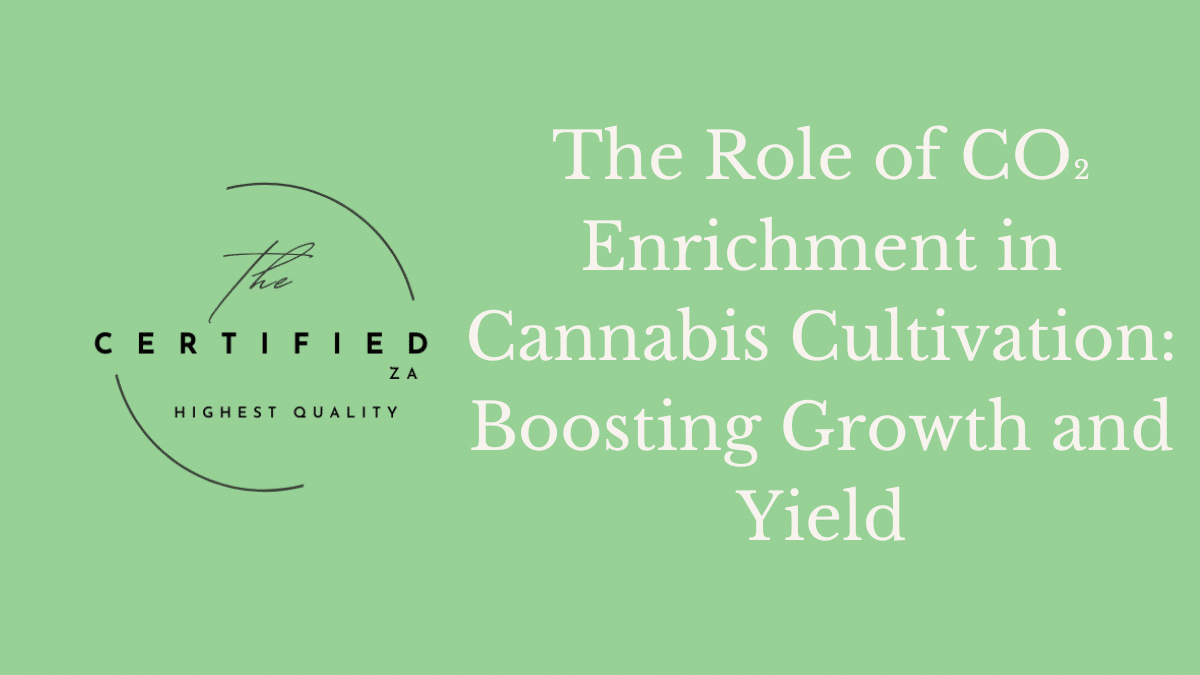
Unlocking the Next Level of Cannabis Cultivation
Throughout our series on cannabis cultivation, we’ve explored fundamental and advanced techniques to optimize plant health and yield. From environmental controls and lighting to nutrient management and harvesting, each step plays a crucial role in achieving high-quality results. Today, we will discuss CO₂ enrichment, and what that means for your cannabis. A supplement that more advanced growers use to take things to the Next Level.
Carbon dioxide (CO₂) is an essential component of photosynthesis, allowing plants to convert light into energy and biomass. Increasing CO₂ levels in a controlled environment can significantly boost growth rates, yield potential, and overall plant health. But mastering CO₂ enrichment requires a thorough understanding of its interactions with light, temperature, and humidity. We’ll break down some of the science, benefits, and practical applications of CO₂ enrichment, helping you decide if it’s the right approach for your grow setup.
The Science of CO₂ and Photosynthesis
Plants, including cannabis, use carbon dioxide during photosynthesis to produce sugars that fuel growth. The process occurs in the chloroplasts of leaf cells, where CO₂, water, and light combine to form glucose and oxygen. Plants can photosynthesise more efficiently in environments with higher CO₂ concentrations, leading to faster growth and higher yields.
Research shows that elevated CO₂ levels can significantly boost net photosynthesis (PN) and water use efficiency (WUE) in cannabis. In a study involving high-THC yielding varieties, a CO₂ concentration of 700 μmol mol−1 increased PN by up to 44% and WUE by as much as 191%, while also decreasing stomatal conductance (gs) and transpiration rate (E). This demonstrates a more efficient use of water while maximizing photosynthesis, a vital combination for robust plant growth.
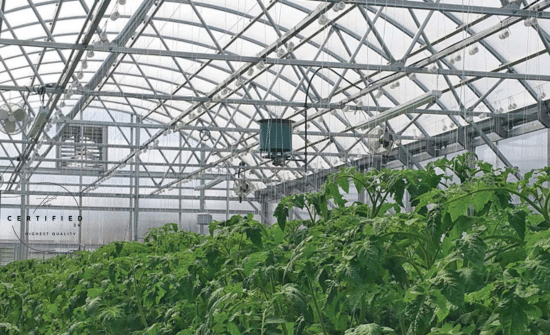
However, the effectiveness of CO₂ enrichment is not solely dependent on CO₂ levels. It also requires adequate light intensity and optimal temperatures to maximize photosynthesis. Studies show that cannabis can benefit from CO₂ levels up to 1,200–1,500 ppm when paired with intense lighting (e.g., 1,000 µmol·m²/s or more) and temperatures ranging from 24°C to 30°C. If CO₂ is increased without raising light levels, the plant may not fully utilize the additional carbon, wasting resources and potentially causing stress.
Benefits of CO₂ Enrichment
1. Increased Growth Rates and Yields
Elevating CO₂ levels can accelerate photosynthesis, allowing cannabis plants to grow larger and faster. This leads to denser buds, increased biomass, and enhanced resin production. Studies have shown yield increases of up to 20–30% when optimal CO₂ enrichment practices are employed.
2. Enhanced Cannabinoid and Terpene Production
Cannabis plants grown under elevated CO₂ conditions tend to produce higher concentrations of cannabinoids and terpenes. The enhanced metabolic activity promotes the synthesis of terpenoids and flavonoids, contributing to richer aromas and more potent effects.
3. Improved Stress Tolerance
CO₂-enriched plants exhibit greater resistance to environmental stressors, including heat stress and minor nutrient fluctuations. This makes them more resilient during periods of intense light or variable humidity. Additionally, CO₂ enrichment has been shown to decrease stomatal conductance and transpiration, which helps reduce water loss and improves overall water use efficiency. These traits are especially beneficial in environments prone to drought conditions, allowing cannabis to thrive where other crops might struggle.
Optimal CO₂ Levels for Cannabis
Vegetative Stage
During vegetative growth, cannabis can handle CO₂ levels between 800–1,000 ppm. The focus here is on rapid foliage development and strong stem growth. Even though these numbers are related to the study. Ambient CO₂ levels fluctuate. In outdoor open air, it ranges between 200 – 400 ppm and in more densely packed urban spaces, ambient CO₂ levels can fluctuate between 600 – 900 ppm. This in turn has the potential of making CO₂ enrichment during the vegetative stage less effective.
Flowering Stage
In the flowering phase, CO₂ levels can be increased to 1,200–1,500 ppm, especially when paired with high-intensity lighting. This ensures that bud density and resin production reach their full potential. However, CO₂ should be reduced during the final two weeks to avoid compromising flavor and quality. The balance towards the end is very crucial. It is important to note that this technique serves as an addition to your grow spaces and is not a main supplement.
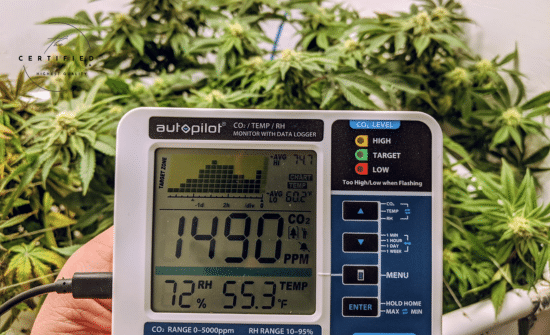
Avoiding CO₂ Overload
While CO₂ enrichment has benefits, excessive levels above 2,000 ppm can cause plant stress, reduced cannabinoid production, and metabolic imbalances. Additionally, suppose CO₂ levels are elevated without sufficient light intensity. In that case, the plants may not be able to use the excess carbon effectively, leading to diminished returns and potential stomatal closure, which can reduce gas exchange and negatively impact growth. Potentially creating mould. Careful monitoring is crucial to avoid detrimental effects.
Methods of CO₂ Enrichment
1. Compressed CO₂ Tanks
Compressed gas tanks deliver precise control and are suitable for indoor grows. These systems use regulators and timers to maintain consistent CO₂ levels. A more expensive solution, but as long as you set up your controls, understand what you need to achieve and have your room sealed properly, you can be reset assured this approach will boost production.
- Pros: High accuracy, efficient for medium to large indoor setups.
- Cons: Initial setup cost and the need for regular tank replacement.
2. CO₂ Generators
Burning propane or natural gas releases CO₂ as a byproduct. These generators are commonly used in commercial operations. Normally only used when it gets cold during the winter. This approach won’t work for most. However, it has been proven to work as long as the propane burning and exhaust systems are set up correctly. Greenhouses in areas like the Free State can benefit from this as it reaches below 8 degrees easily. Where as in KZN it might not be a solution at all.
- Pros: Reliable and cost-effective for large-scale grows.
- Cons: Generates heat, requiring robust ventilation systems and not a solution for all.
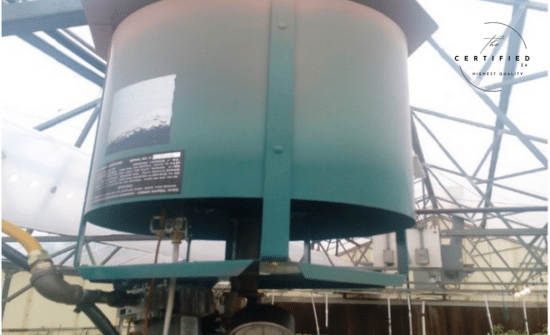
3. Fermentation and Organic Methods
DIY options like yeast and sugar fermentation or compost-based CO₂ production are low-cost but less precise. There are even mycelium grow bags that you can hang inside your indoor grow tent. They will naturally produce CO₂ but are hard to monitor. A cool basic CO₂ fermentation you can do is to use a bottle of warm water, dissolve some sugar in it and add some yeast. You want to hang these above your plants as carbon dioxide will naturally settle to the ground.
- Pros: Affordable and accessible.
- Cons: Inconsistent output and potential for odor issues.
Implementing CO₂ Enrichment in Different Grow Setups
Indoor Grows
CO₂ enrichment works best in sealed environments where CO₂ can be consistently maintained. Integrating CO₂ monitors and automated release systems helps optimize levels without human intervention. This upgrade is for those that have their space dialed in and are ready to take things to the next level. Don’t level up to this phase if you are still trying to expand the flower room, figuring out nutrient regiments etc.
Greenhouses
Due to ventilation requirements, balancing natural light with supplemental CO₂ can be challenging. Automated systems that sync with light and temperature controls are ideal for maintaining balanced conditions. These systems are mainly commercially viable solutions only. They allow for more sophistication in operations and higher quality outputs. The only drawback is that there is room for error, and people tend to compromise or forget protoco,l so these systems end up working against farmers in greenhouses. Just my 2 cents.
Outdoor Grows
Due to natural air exchange, the benefits of CO₂ enrichment are limited outdoors. Techniques like plant clustering and dense canopy management can help retain some CO₂ around plants. However, they are not the best methods. There are CO₂ tablets available that are water soluble, and these will have a benefit for the plants too. If you are outdoors growing organically, consider increasing your fungal activity in your soil. This will also increase your CO₂ production around the rhizosphere.
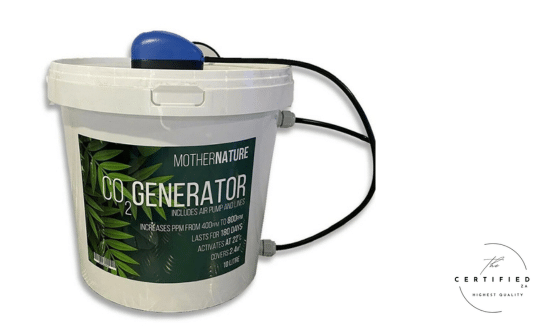
Elevating Cannabis Cultivation with CO₂
CO₂ enrichment represents the next step in advanced cannabis cultivation, allowing growers to maximize growth potential and yield. However, success requires careful monitoring, environmental control, and precise application to avoid stress and resource waste. For growers who have mastered the basics, implementing CO₂ enrichment can significantly boost productivity and plant quality, making it a valuable tool in the quest for the perfect harvest.
Let us know your experiences with CO₂ enrichment and how it has impacted your grow!

